|

THE 1952 WASHINGTON, DC, UFO FLAP
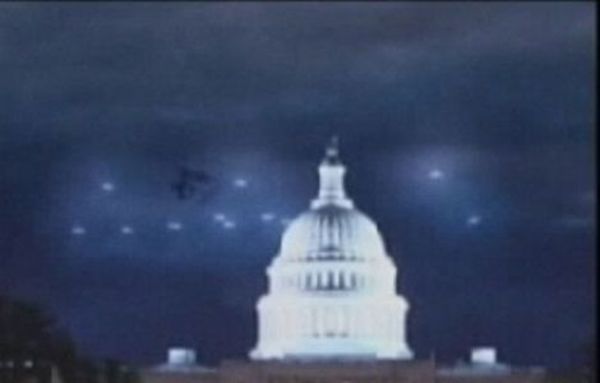
The 1952 Washington, D.C. UFO incident, also known as the Washington flap, the Washington National Airport Sightings, or the Invasion of Washington, was a series of unidentified flying object reports from July 12 to July 29, 1952, over Washington, D.C. The most publicized sightings took place on consecutive weekends, July 19–20 and July 26–27. UFO historian Curtis Peebles called the incident "the climax of the 1952 (UFO) flap" - "Never before or after did Project Blue Book and the Air Force undergo such a tidal wave of (UFO) reports." At 11:40 p.m. on Saturday, July 19, 1952, Edward Nugent, an air traffic controller at Washington National Airport (today Ronald Reagan Washington National Airport), spotted seven objects on his radar. The objects were located 15 miles (24 km) south-southwest of the city; no known aircraft were in the area and the objects were not following any established flight paths. Nugent's superior, Harry Barnes, a senior air-traffic controller at the airport, watched the objects on Nugent's radarscope. He later wrote:
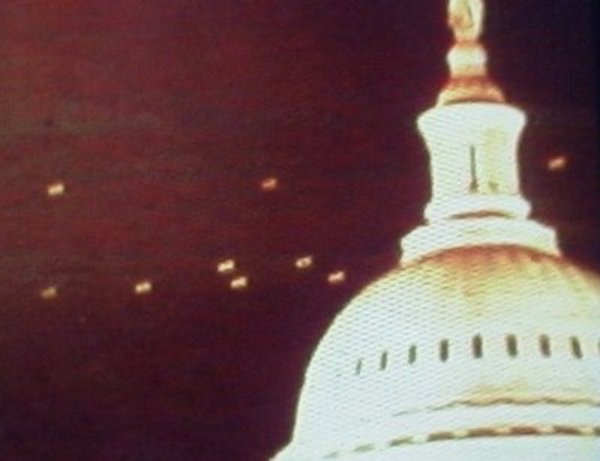
We knew immediately that a very strange situation existed . . . their movements were completely radical compared to those of ordinary aircraft. Barnes had two controllers check Nugent's radar; they found that it was working normally. Barnes then called National Airport's radar-equipped control tower; the controllers there, Howard Cocklin and Joe Zacko, said that they also had unidentified blips on their radar screen, and that they had seen "a bright light hovering in the sky... took off, zooming away at incredible speed." Cocklin told Zacko "Did you see that? What the hell was that?" At this point, other objects appeared in all sectors of the radarscope; when they moved over the White House and the United States Capitol, Barnes called Andrews Air Force Base, located 10 miles from National Airport. Although Andrews reported that they had no unusual objects on their radar, an airman soon called the base's control tower to report the sighting of a strange object. Airman William Brady, who was in the tower, then saw an "object which appeared to be like an orange ball of fire, trailing a tail . . . [it was] unlike anything I had ever seen before." As Brady tried to alert the other personnel in the tower, the strange object "took off at an unbelievable speed."

On one of National Airport's runways, S.C. Pierman, a Capital Airlines pilot, was waiting in the cockpit of his DC-4 for permission to take off. After spotting what he believed to be a meteor, he was told that the control tower's radar had detected unknown objects closing in on his position. Pierman observed six objects — "white, tailless, fast-moving lights" — over a 14-minute period. Pierman was in radio contact with Barnes during his sighting, and Barnes later related that "each sighting coincided with a pip we could see near his plane. When he reported that the light streaked off at a high speed, it disappeared on our scope." At Andrews Air Force Base, meanwhile, the control tower personnel were tracking on radar what some thought to be unknown objects, but others suspected, and in one instance were able to prove, were simply stars and meteors. However, Staff Sgt. Charles Davenport observed an orange-red light to the south; the light "would appear to stand still, then make an abrupt change in direction and altitude . . . this happened several times." At one point both radar centers at National Airport and the radar at Andrews Air Force Base were tracking an object hovering over a radio beacon. The object vanished in all three radar centers at the same time. At 3 a.m., shortly before two United States Air Force F-94 Starfire jet fighters from New Castle Air Force Base in Delaware arrived over Washington, all of the objects vanished from the radar at National Airport. However, when the jets ran low on fuel and left, the objects returned, which convinced Barnes that "the UFOs were monitoring radio traffic and behaving accordingly." The objects were last detected by radar at 5:30 a.m.
The sightings of July 19–20, 1952, made front-page headlines in newspapers around the nation. A typical example was the headline from the Cedar Rapids Gazette in Iowa. It read "SAUCERS SWARM OVER CAPITAL" in large black type. By coincidence, USAF Captain Edward J. Ruppelt, the supervisor of the Air Force's Project Blue Book investigation into UFO sightings, was in Washington at the time. However, he did not learn about the sightings until Monday, July 21, when he read the headlines in a Washington-area newspaper. After talking with intelligence officers at the Pentagon about the sightings, Ruppelt spent several hours trying to obtain a staff car so he could travel around Washington to investigate the sightings, but was refused as only generals and senior colonels could use staff cars. He was told that he could rent a taxicab with his own money; by this point Ruppelt was so frustrated that he left Washington and flew back to Blue Book's headquarters at Wright-Patterson AFB in Dayton, Ohio. At 8:15 p.m. on Saturday, July 26, 1952, a pilot and stewardess on a National Airlines flight into Washington observed some strange lights above their plane. Within minutes, both radar centers at National Airport, and the radar at Andrews AFB, were tracking more unknown objects. A master sergeant at Andrews visually observed the objects; he later said that "these lights did not have the characteristics of shooting stars. There was no trails . . . they traveled faster than any shooting star I have ever seen."
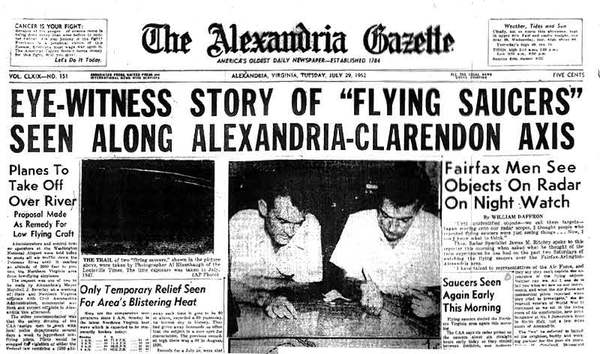
Meanwhile, Albert M. Chop, the press spokesman for Project Blue Book, arrived at National Airport and, due to security concerns, denied several reporters' requests to photograph the radar screens. He then joined the radar center personnel. By this time (9:30 p.m.) the radar center was picking up unknown objects in every sector. At times the objects traveled slowly; at other times they reversed direction and moved across the radarscope at speeds calculated at up to 7,000 mph (11,250km/h). At 11:30 p.m., two U.S. Air Force F-94 Starfire jet fighters from New Castle Air Force Base in Delaware arrived over Washington. Captain John McHugo, the flight leader, was vectored towards the radar blips but saw nothing, despite repeated attempts. However, his wingman, Lieutenant William Patterson, did see four white "glows" and chased them. He later said that "I tried to make contact with the bogies below 1,000 feet. I was at my maximum speed...I ceased chasing them because I saw no chance of overtaking them." According to Albert Chop, when ground control asked Patterson "if he saw anything", Patterson replied "'I see them now and they're all around me. What should I do?'...And nobody answered, because we didn't know what to tell him." After midnight on July 27, Major Dewey Fournet, Project Blue Book's liaison at the Pentagon, and Lieutenant John Holcomb, a United States Navy radar specialist, arrived at the radar center at National Airport. During the night, Lieutenant Holcomb received a call from the Washington National Weather Station. They told him that a slight temperature inversion was present over the city, but Holcomb felt that the inversion was not "nearly strong enough to explain the 'good and solid' returns" on the radarscopes.
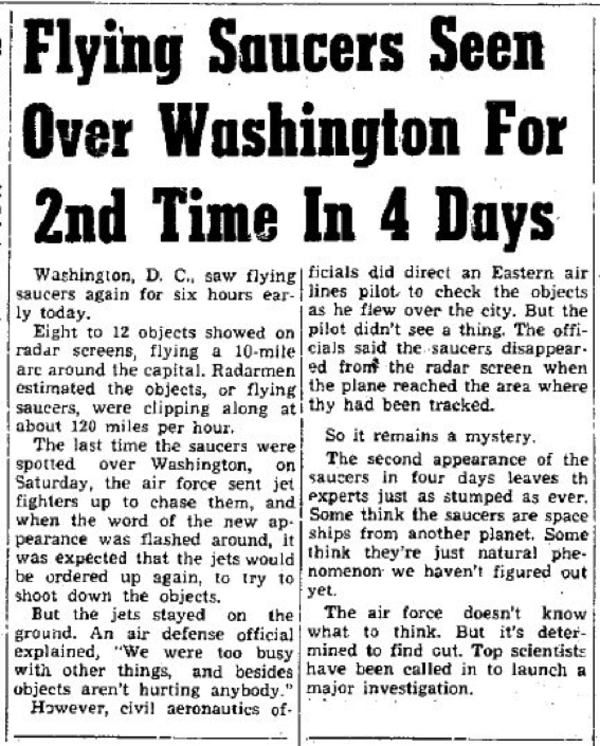
Fournet relayed that all those present in the radar room were convinced that the targets were most likely caused by solid metallic objects. There had been weather targets on the scope too, he said, but this was a common occurrence and the controllers "were paying no attention to them." Two more F-94s from New Castle Air Force Base were scrambled during the night. One pilot saw nothing unusual; the other pilot saw a white light which "vanished" when he moved towards it. Additionally, "civilian planes flying into Washington reported seeing strange glowing objects in places where the radar was getting blips." As on July 20, the sightings and unknown radar returns ended at sunrise. The sightings of July 26–27 also made front-page headlines, and led President Harry Truman to have his air force aide call Ruppelt and ask for an explanation of the sightings and unknown radar returns. Truman listened to the conversation between the two men on a separate phone, but did not ask questions himself. Ruppelt, remembering the conversation he had with Captain James, told the president's assistant that the sightings might have been caused by a temperature inversion, in which a layer of warm, moist air covers a layer of cool, dry air closer to the ground. This condition can cause radar signals to bend and give false returns. However, Ruppelt had not yet interviewed any of the witnesses or conducted a formal investigation.

CIA historian Gerald Haines, in his 1997 history of the CIA's involvement with UFOs, also mentions Truman's concern. "A massive buildup of sightings over the United States in 1952, especially in July, alarmed the Truman administration. On 19 and 20 July, radar scopes at Washington National Airport and Andrews Air Force Base tracked mysterious blips. On 27 July, the blips reappeared." The CIA would react to the 1952 wave of UFO reports by "forming a special study group within the Office of Scientific Intelligence (OSI) and Office of Current Intelligence (OCI) to review the situation. Edward Tauss reported for the group that most UFO sightings could be easily explained. Nonetheless, he recommended that the Agency continue monitoring the problem." The CIA's concern with the issue would lead to the creation, in January 1953, of the Robertson Panel.
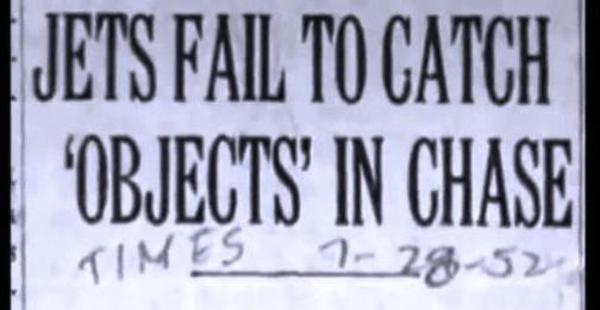
To calm public anxiety over the wave of UFO reports, answer the news media's questions about the sightings — and, hopefully, to slow down the numbers of UFO reports being sent to Blue Book, which were clogging normal intelligence channels — Air Force Major Generals John Samford, USAF Director of Intelligence, and Roger Ramey, USAF Director of Operations (covered up the Roswell Crash), held a well-attended press conference at the Pentagon on July 29, 1952. It was the largest Pentagon press conference since World War II. Press stories called Samford and Ramey the Air Force's two top UFO experts. Samford was heavily influenced by Captain Roy James, who had discussed the sightings with him earlier in the day and who also spoke at the conference. Samford declared that the visual sightings over Washington could be explained as misidentified aerial phenomena (such as stars or meteors). Samford also stated that the unknown radar targets could be explained by temperature inversion, which was present in the air over Washington on both nights the radar returns were reported.
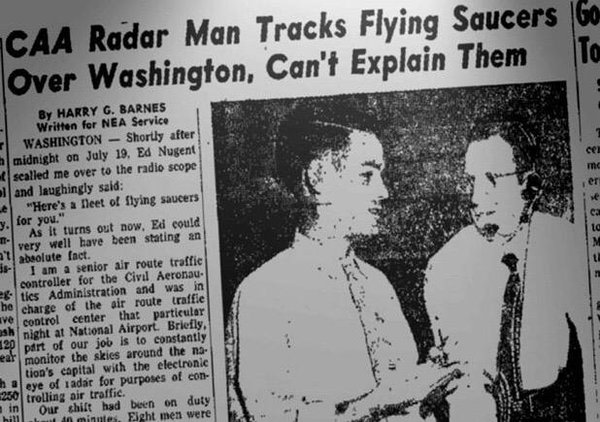
In addition, Samford stated that the unknown radar contacts were not caused by solid material objects, and therefore posed no threat to national security. In response to a question as to whether the Air Force had recorded similar UFO radar contacts prior to the Washington incident, Samford said that there had been "hundreds" of such contacts where Air Force fighter interceptions had taken place, but stated they were all "fruitless." The conference proved to be successful "in getting the press off our backs", Ruppelt later wrote. Among the witnesses who supported Samford's explanation was the crew of a B-25 bomber, which had been flying over Washington during the sightings of July 26–27. The bomber was vectored several times by National Airport over unknown targets on the airport's radarscopes, yet the crew could see nothing unusual. Finally, as a crew member related, "the radar had a target which turned out to be the Wilson Lines steamboat trip to Mount Vernon... the radar was sure as hell picking up the steamboat." Air Force Captain Harold May was in the radar center at Andrews AFB during the sightings of July 19–20.

Upon hearing that National Airport's radar had picked up an unknown object heading in his direction, May stepped outside and saw "a light that was changing from red to orange to green to red again...at times it dipped suddenly and appeared to lose altitude." However, May eventually concluded that he was simply seeing a star that was distorted by the atmosphere, and that its "movement" was an illusion. At 3 a.m. on July 27, an Eastern Airlines flight over Washington was told that an unknown object was in its vicinity; the crew could see nothing unusual. When they were told that the object had moved directly behind their plane, they began a sharp turn to try to see the object, but were told by National Airport's radar center that the object had "disappeared" when they began their turn. At the request of the Air Force, the CAA's Technical Development and Evaluation Center did an analysis of the radar sightings. Their conclusion was that "a temperature inversion had been indicated in almost every instance when the unidentified radar targets or visual objects had been reported." Project Blue Book would eventually label the unknown Washington radar blips as false images caused by temperature inversion, and the visual sightings as misindentified meteors, stars, and city lights. In later years two prominent UFO skeptics, Dr. Donald Menzel, an astronomer at Harvard University, and Philip Klass, a senior editor for Aviation Week magazine, would also argue in favor of the temperature inversion/mirage hypothesis.
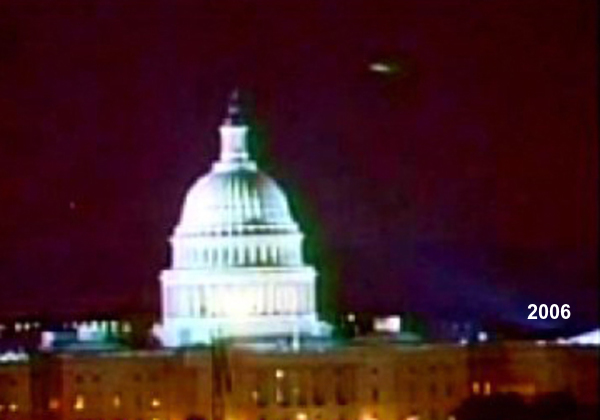
Almost from the moment of General Samford's press conference, eyewitnesses, UFO researchers, and Air Force personnel came forward to criticize the temperature inversion/mirage explanation. Captain Ruppelt noted that Major Fournet and Lt. Holcomb, who disagreed with the Air Force's explanation, were not in attendance at Samford's press conference. Ruppelt himself discovered that "hardly a night passed in June, July, and August in 1952 that there wasn't a [temperature] inversion in Washington, yet the slow-moving, solid radar targets appeared on only a few nights." According to a story printed by INS, the United States Weather Bureau also disagreed with the temperature inversion hypothesis, one official stating that "such an inversion ordinarily would appear on a radar screen as a steady line, rather than as single objects as were sighted on the airport radarscope."
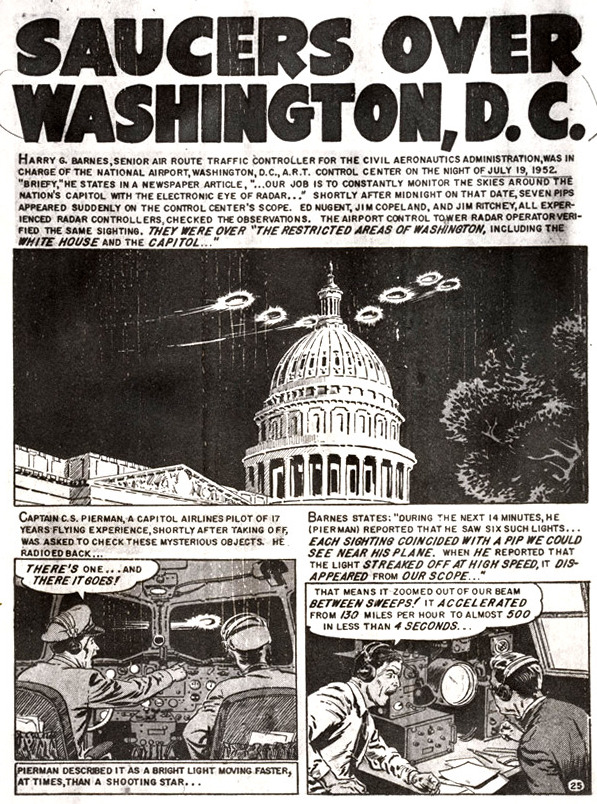
Also, according to Ruppelt, when he was able to interview the radar and control tower personnel at Washington National Airport, not a single person agreed with the Air Force explanation. Michael Wertheimer, a researcher for the government-funded Condon Report, investigated the case in 1966. He found that the radar witnesses still disputed the Air Force explanation, but that did not stop the report from agreeing with the temperature inversion/mirage explanation. Ruppelt related that on July 27 the control tower at Washington National had called the control tower at Andrews AFB and notified them that their radar had an unknown object just south of the Andrews control tower, directly over the Andrews AFB radio range station. According to Ruppelt, when the Andrews control tower personnel looked they all saw "a huge fiery-orange sphere" hovering over the range station. When Ruppelt interviewed the tower personnel several days later, they insisted that they had been mistaken and had merely seen a bright star. However, when Ruppelt checked an astronomical chart he found that there were no bright stars over the station that night, and that he had "heard from a good source that the tower men had been 'persuaded' a bit" by superior officers to claim that their sighting was merely a star.
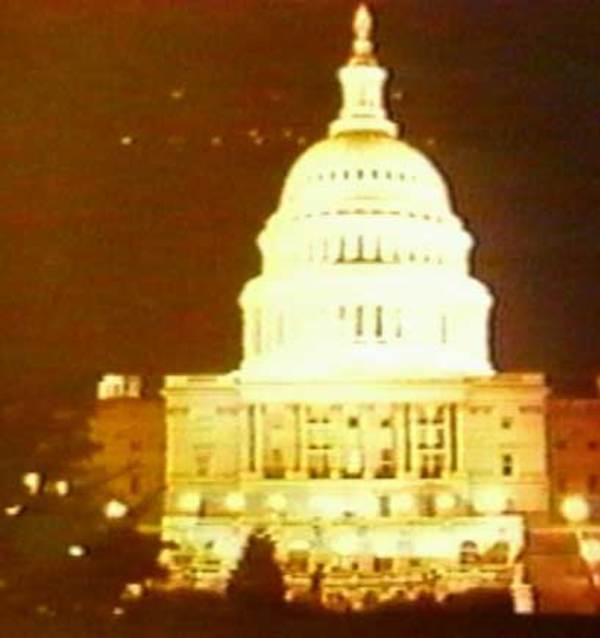
There were also witnesses who claimed to see structured craft and not merely "glows" or bright lights. On July 19 an Army artillery officer, Joseph Gigandet, was sitting on the front porch of his home in Alexandria, Virginia, across the Potomac River from Washington. At 9:30 p.m. he claimed to see "a red cigar-shaped object" which sailed slowly over his house. Gigandet estimated the object's size as comparable to a DC-7 airplane at about 10,000 feet altitude; he also claimed that the object had a "series of lights very closely set together" on its sides. The object eventually flew back over his house a second time, which led Gigandet to assume that it was circling the area. When the object flew away a second time, it turned a deeper red color and moved over the city of Washington itself; this occurred less than two hours before Edward Nugent first spotted the unknown objects on his radar at Washington National. Dr. James E. McDonald, a physicist at the University of Arizona and a prominent ufologist in the 1960s, did his own analysis of the Washington sightings, including speaking with four pilots and five radar personnel who were involved with the 1952 Washington incident. McDonald discussed his conclusions before the Committee on Science and Astronautics of the US House of Representatives. He told the committee that the temperature inversion theory used to explain the unknown radar traces was "quite untenable" and that, in his opinion, the 1952 Washington UFO incident was "an instance of unidentified aerial objects over our Capital." Howard Cocklin, who was interviewed by McDonald about the incident, told a Washington Post reporter in 2002 that he was still "convinced that he saw an object over Washington National...I saw it on the [radar] screen and out the window...it was a whitish-blue object. Not a light - a solid form...a saucer-shaped object."
|


